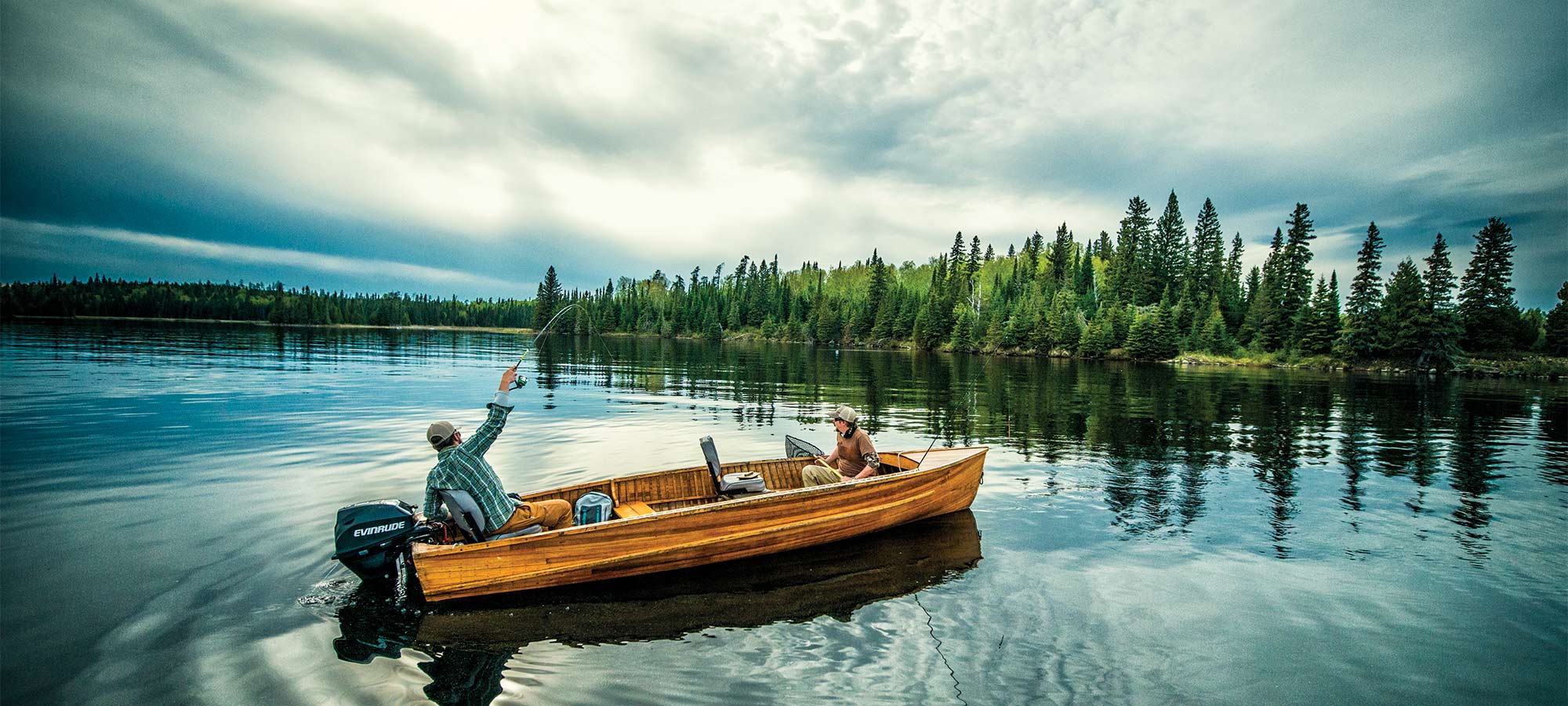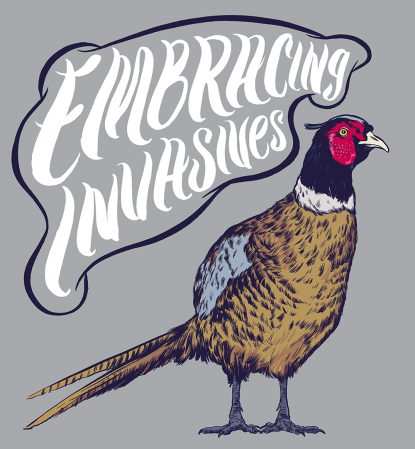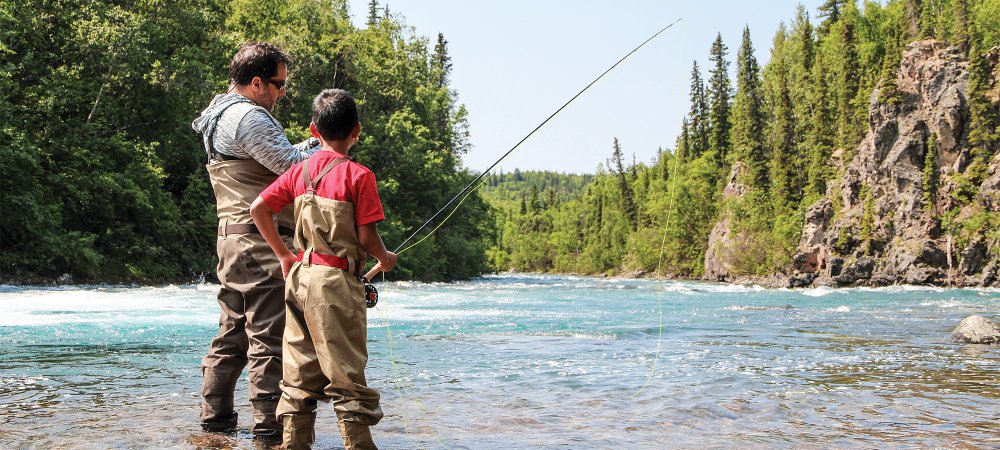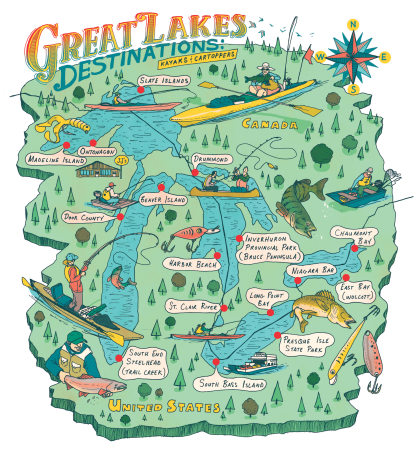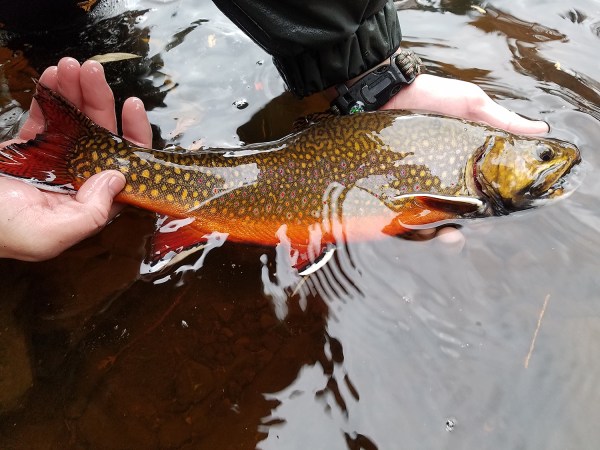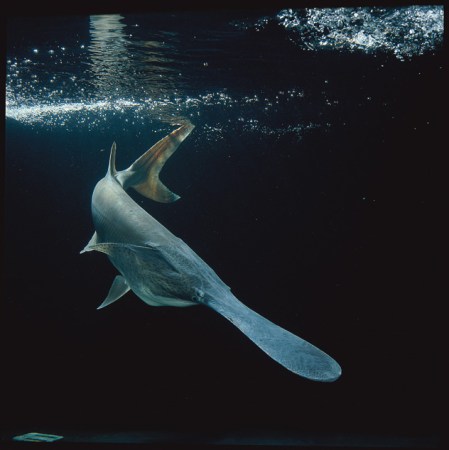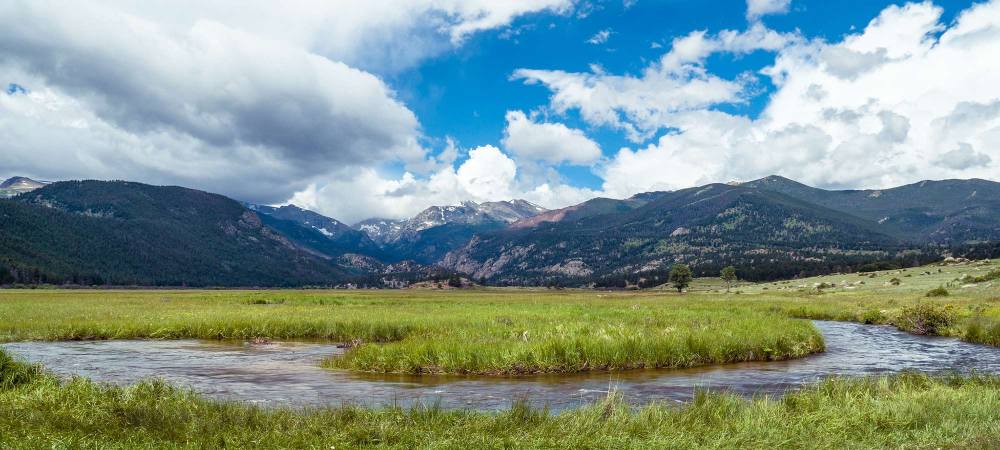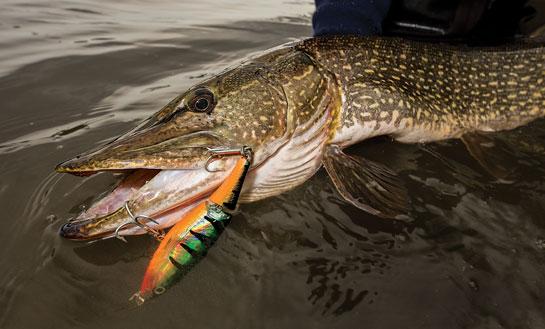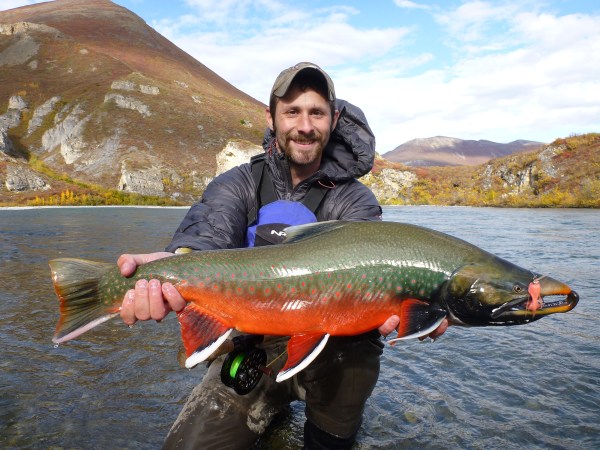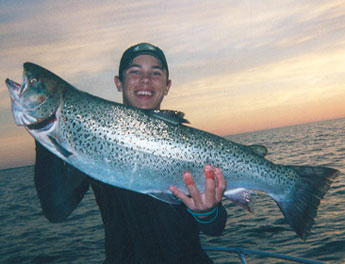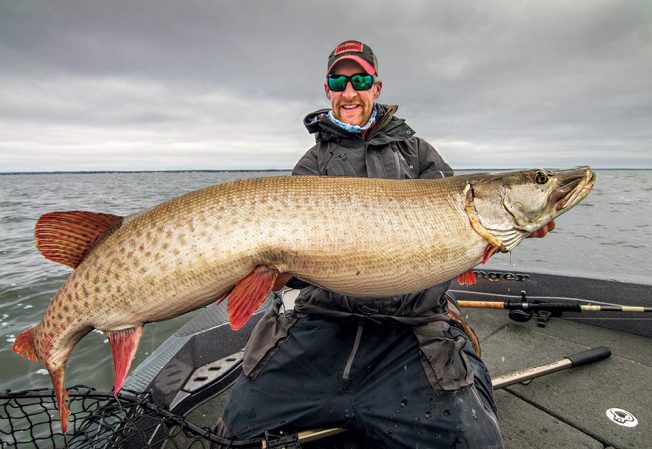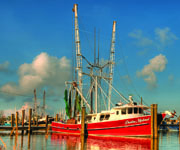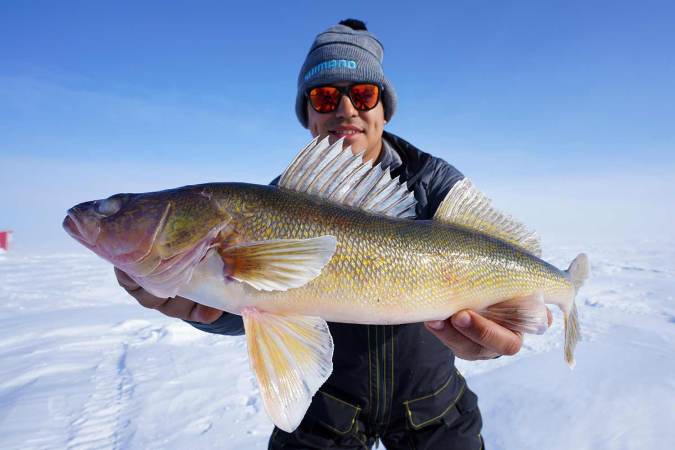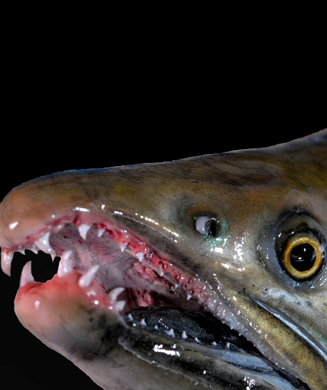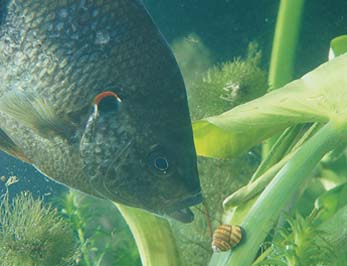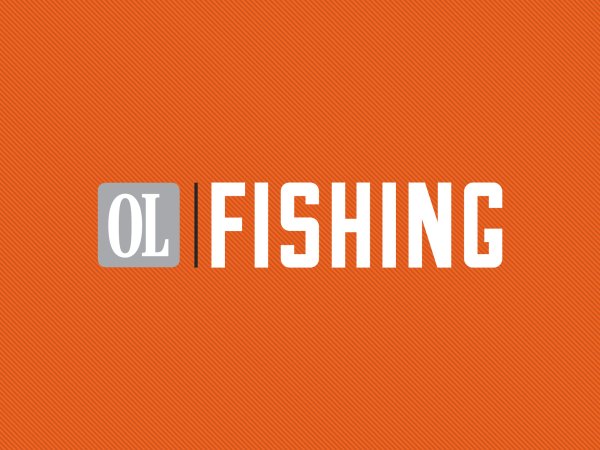“Is it ‘Sha-PLOO’?” Dan asks, making a sound like a heavy stone plopped in a pond.
“I think the guy at the gas station said ‘CHAP-low,'” Tom says. “Like Chapstick.”
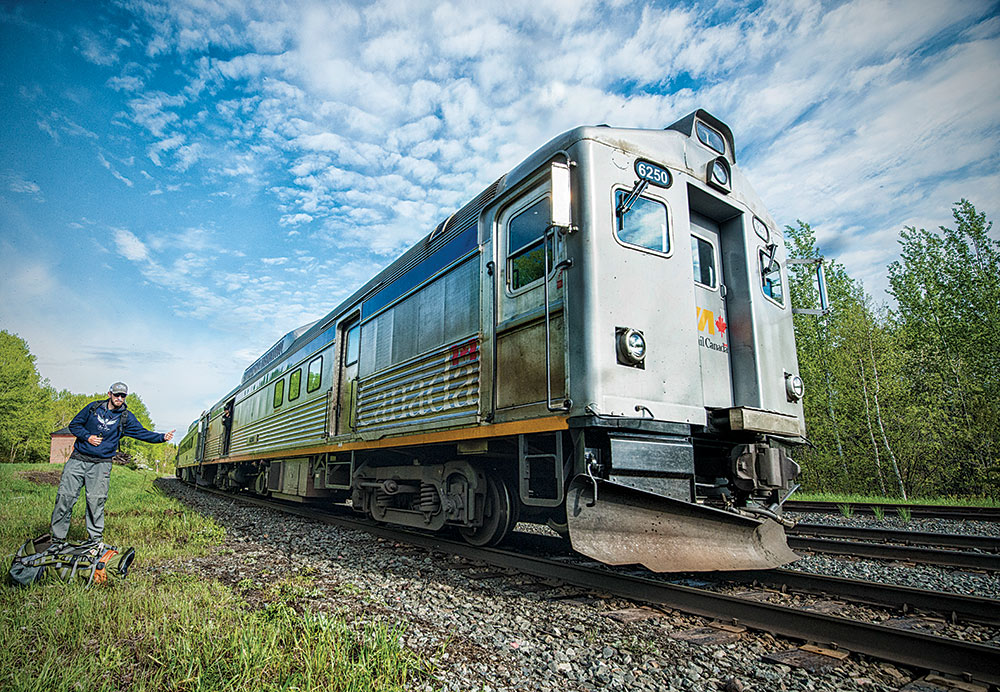
“Pretty sure it’s ‘SHAP-lee-oh,’” Brian counters, going full French on it with a third syllable. However you want to say it, it had taken the four of us an entire day to get to the Northern Ontario town of Chapleau, on a drive that saw more moose than bears and more bears than gas stations—exactly the ratio you’re shooting for on a trip like this. The plan, as hashed out over a long winter’s secret Facebook group, is to go lodge-hopping across the region by train and fish hard at each stop: pike and walleye at Lake Esnagi; pike, walleye, and brook trout at Wabatongushi Lake. I’ve driven solo from Ann Arbor, Michigan, while Tom, Dan, and Brian have driven up together from Minneapolis. I’ve fished with Tom a thousand times, but the other two guys are new to me. In certain situations, I’d have some trepidation about such an untested crew, but Dan is Tom’s brother, and I’ve come to believe that anyone with the last name Hazelton is piscatorially legit. As for Brian Bergeson, he’s one of those anglers whose name precedes him. A well-known fly designer and tier, his creations are responsible for catching hundreds of huge fish, including several world records. As we stand around waiting for Canadian Pacific to show up, Brian opens his rod case to show off a custom rod that one of his globe-trotting clients sent him as thanks for assisting with the largest Russian taimen ever taken on a fly rod. He winks as he re-sheaths the stick. “My flies don’t mess around.”
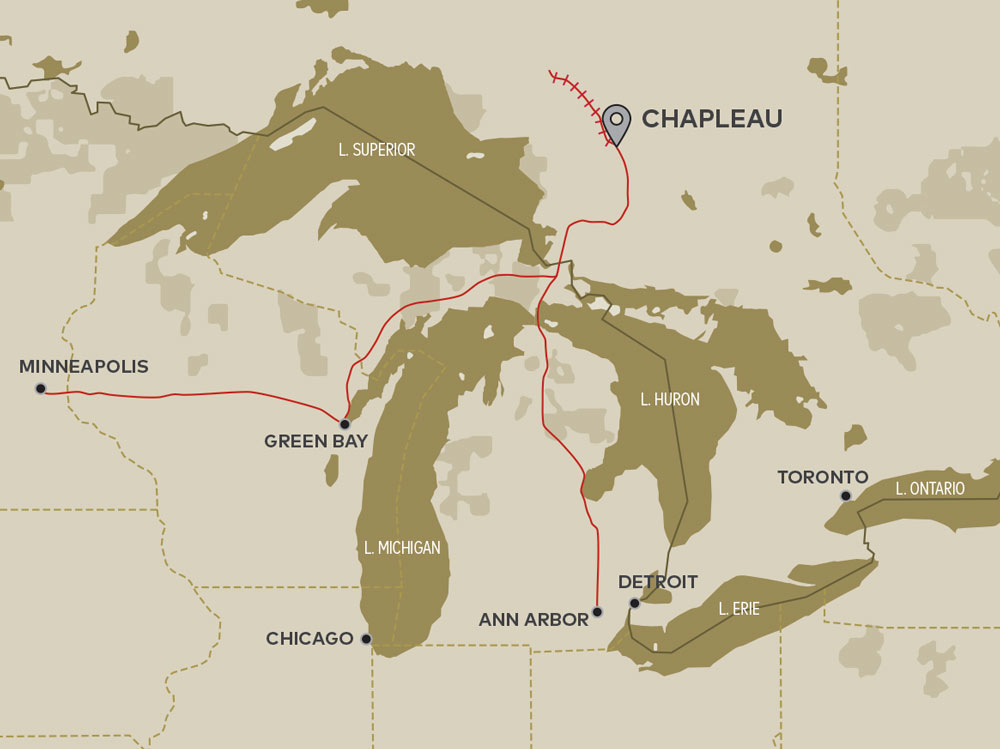
I crack open a nondescript Canadian pilsner and look out over the train platform, past clumps of men with their gear piled high into mountains, past a group of paddlers with two canoes bound for the freight car, past a large contingent from Detroit with matching ball caps and bug nets—even though it’s late May and we are still pre-blackfly. There, beyond the curve of track, is our shared destination: the unpaved, off-the-grid country of the Canadian Shield. This is the first time I’ve approached the hinterland this way. I’ve been dumped off on fishing trips from pretty much every other conceivable form of transport—by floatplane, car, truck, and canoe, or on foot. I even once did 30 miles of logging road on a mountain bike behind a wolf pack I took great pains not to gain on. But never have I taken a train.
This trainlessness is a shame given the importance of rail lines in shaping the modern sporting imagination. The first Canadian rail lines followed in the footsteps of the fur trade, connecting rivers like the St. Lawrence and Richelieu and essentially functioning as an elaborate portage. They then expanded west with the timber industry, pushing into the frontier farther year by year. And when the great harvest industries petered out, these same trains freighted sportsmen north, in an era that coincided with the first outdoor magazines and the dreams they stoked: of remoteness, solitude, a quality of hunting and fishing unavailable in the backyards of civilization.
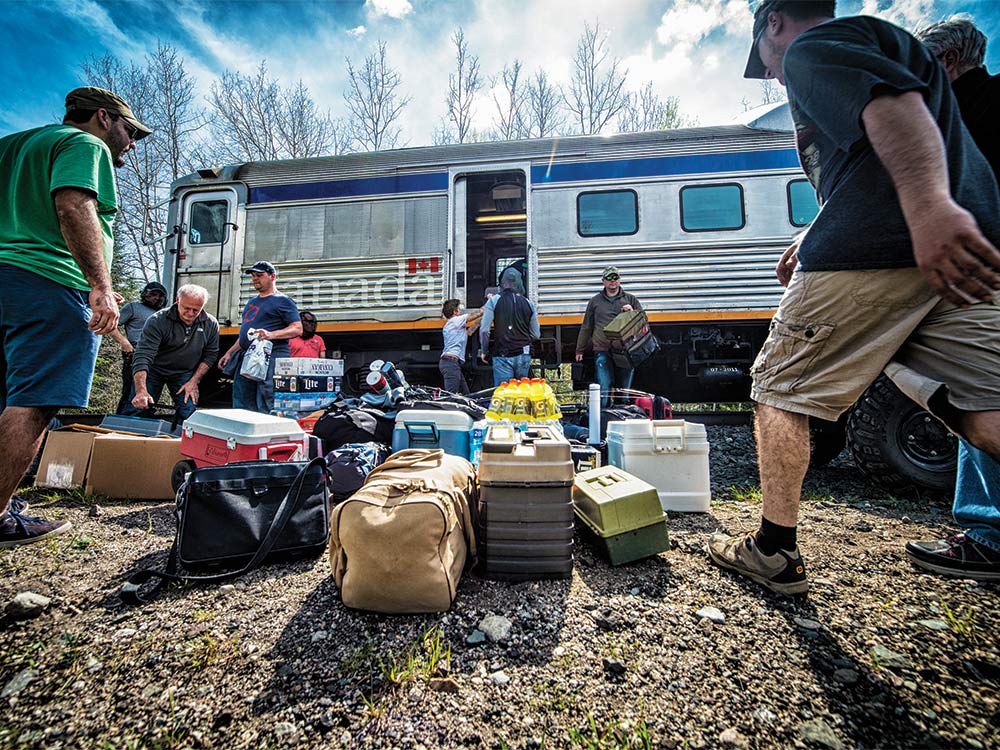
No other form of transport smacks as clearly of destiny as the train. Bush planes can change course and destination at leisure. Trucks and jeeps can do as they please. But trains have a sense of fatedness about them, and none more so than this particular line, which travels in only one direction per day. Today, it’s west through outposts like Larchwood, Ramsey, Missanabie, and Woman River; tomorrow, it’s east toward Esher, Azilda, Nemegos, and, finally, Sudbury. In a modern life that pulls you in so many directions that you fear quartering regularly, there’s a deep comfort in the idea of a one-direction ride.
The train pulls up, and there’s a bum’s rush to throw gear into the freight car. Even after the canoes and cases of beer, it’s still only marginally filled. I ask the conductor how far off Lake Esnagi is.
“Little under three hours, as the train flies.”
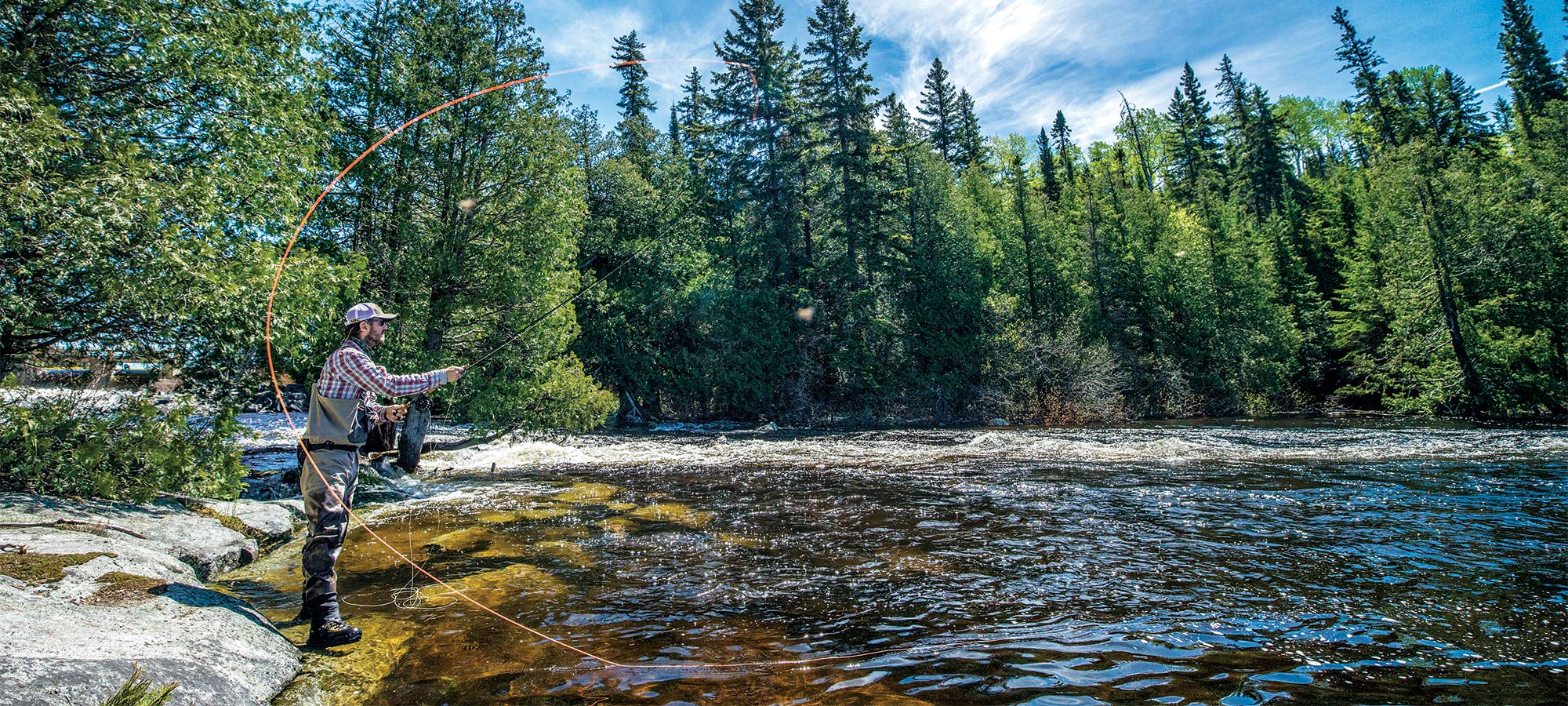
Lake Esnagi
It’s rare, in the boreal North, for spring to show the type of clemency for which it’s elsewhere reputed. Here, it’s less a season than a struggle, with most days striving hard in the direction of either winter or summer, and generally achieving the goal by noon. Our arrival at Lodge 88 coincides with an extended stretch of cold weather that has the walleye and brook trout fishing a little behind schedule. The pike, on other hand, are in full flush. We ask Brent, the head guide, which bay is best. “Pick one,” is his reply.
Under low clouds, we explore the long, narrow bays fingering out from the main lake and the countless tributaries that seep into them. Pike with fresh spawning scars are recuperating in the vicinity of these outflows, and we fish them all in a slow circuit, catching smaller fish first and then, as pike fishing goes, feeling our way out to the larger specimens. The biggest females are hanging back on the edge of the deeper drop-offs, having finished their procreative business and wanting nothing more to do with the bumptious males.
To my knowledge, no one has yet assembled a complete compendium of pike bites, but by the end of the first day, we have cataloged several dozen, from slow stalks to sudden razorings to the toothy arches of airborne Esox. A violent day of pike fishing recalibrates the angler’s nervous system to a generalized expectation of ambush. Dark closets, blind corners, and even lidded toilets are afterward approached with extreme caution.
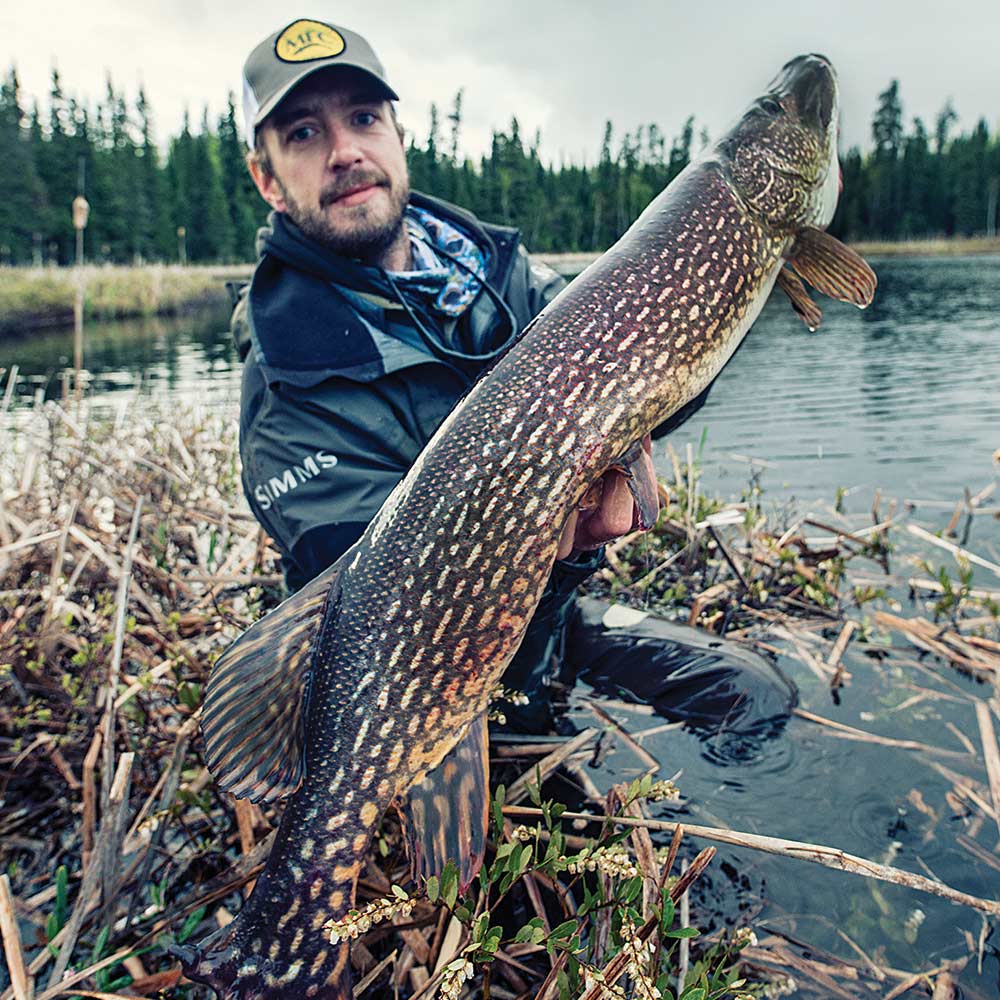
The next day, we go walleye jigging with Brent, who totes along a deep cast-iron pan, a sack of potatoes and onions, and a few cans of pork and beans. To this we’ll add enough fish for a shore lunch, a great ritual of the North and the high tea of the angling class. Everyone participates. Even diehard catch-and-release anglers understand that they are far enough from civilization that the typical rules of engagement do not apply. And it’s a good thing too, since in all the world you could not find a landscape better suited to shore lunch than northern Ontario. Labrador is too thick with sphagnum and spruce, Alaska often too marshy and alluvial. But the Ontario Shield is perfect and provides everything you need: an endless supply of dry wood, plenty of glacial rubble for architecting whatever fashion of stove you require, and perfectly sized islands—big enough to stretch your legs and walk around, but small enough that you’re never out of earshot of the fire popping or the waves lapping on the rocks. But first, we need fish.
I had been nursing a surface-fishing habit and hadn’t jigged for walleyes in years. I’d forgotten the sweet anticipation that builds with each lift and fall of the jig as you thump it down a contour—any second, any second, any second. And then there’s the electric tap-tap of the eat. Much has been made of the steelhead’s take to a swung fly, the toilet-bowl whoosh by which a bass Houdinis a hair bug, but the take of a walleye directly beneath the boat has a primal poetry all its own, with your rod serving not only as a hook-setting tool but as a primitive scale. How heavy is this one? A good eater? Or even too big for a shore lunch?
At high noon we go ashore with a few eater walleyes and one smaller pike for variety’s sake, and Chef Brent goes to work—or tries to. We prowl around the fire like the fish we’ve been hunting, snatching up morsels whenever we can. Patience is not one of the virtues of the angler who has fished hard all day in the open spray of a Shield lake and is then confronted by golden morsels of fresh fish. You pick them up much too hot for your hands and dance them around on your tongue, and simply accept that this week your mouth will remain chronically scorched. Brent’s potatoes, for their part, are otherworldly, coming off the mandoline so thin that you can see through them, then fried crispy burnt at the edges while still retaining a soft gooeyness in the middle. And then, of course, there are the omnipresent pork and beans. If you’re new to the art of the shore lunch, the trick is to regard these not as a side dish but as a condiment, one that improves the taste of everything it comes in contact with. Along with hungry walleyes and rapacious pike, Brent’s five-star lunches become a part of our daily cadence, and by the end of our stay, we have eaten and napped on four of the lake’s dozen or so islands. But then it’s time to go.
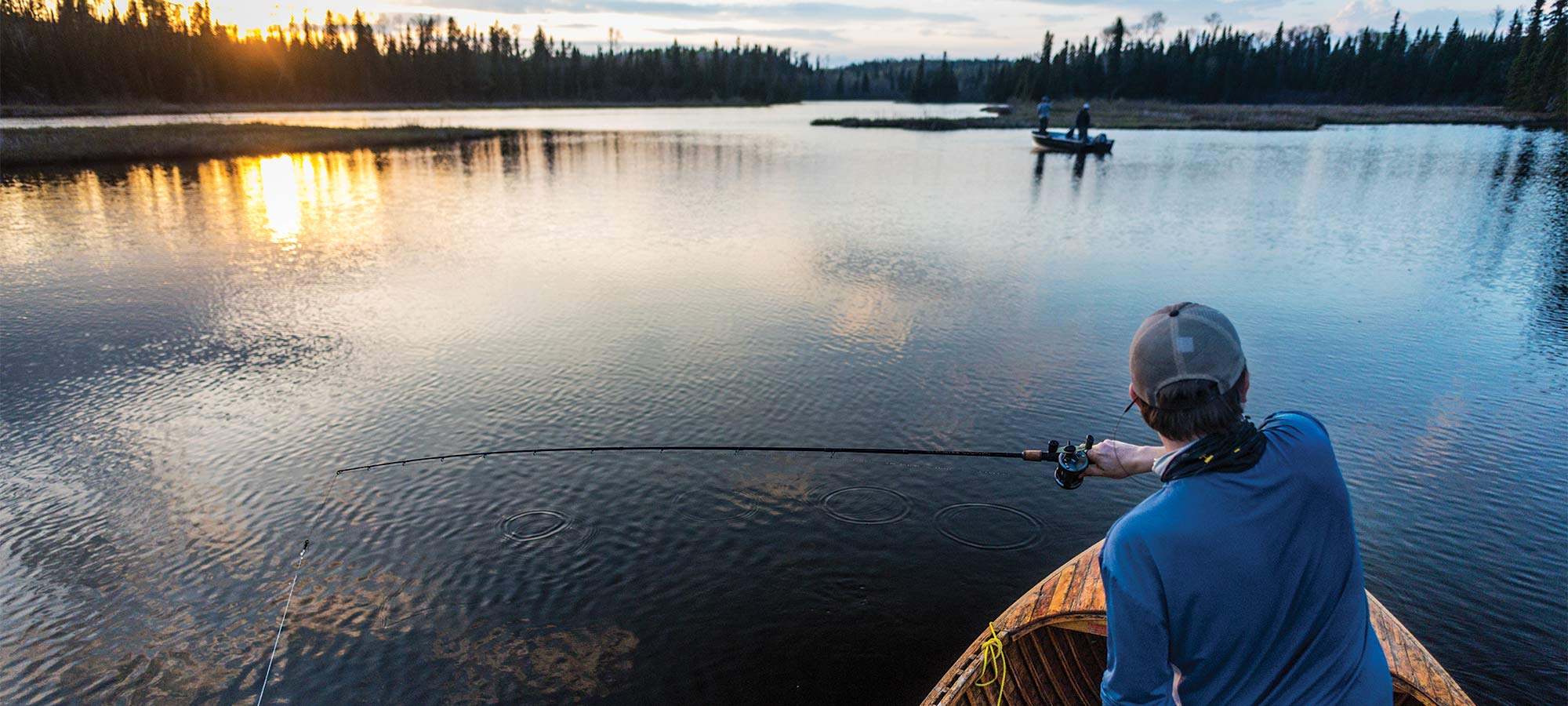
Wabatongushi Lake
Lucky are the anglers, already slaked from several days of good fishing, who find themselves waiting in the woods for a train that will deliver them to many more. Our next stop is Loch Island Lodge on Wabatongushi Lake, which lies on the threshold of that country the early fur traders called Le Petit Nord, a continental divide of sorts that steers the rivers not south to Lake Superior but north toward the Hudson Bay. Over a lunch of pork chops and cherry pie, a group of departing anglers tells us about the largest pike they’d ever seen in one of the bays, a fish that had closely inspected everyone’s spoons and spinners but committed to none. Ryan, the head guide, confirms the story and lays a map of the lake on the table. Holding a pen like an ice pick in a heavily bandaged hand—dock-repair injuries are an Ontario rite of spring—he makes a few scratches on a small bay in the northwest corner of the lake. At first glance it looks like the jagged scrawl of a lie-detector test, but when I rotate the map, I see he’s written the simple, honest word “Big.”
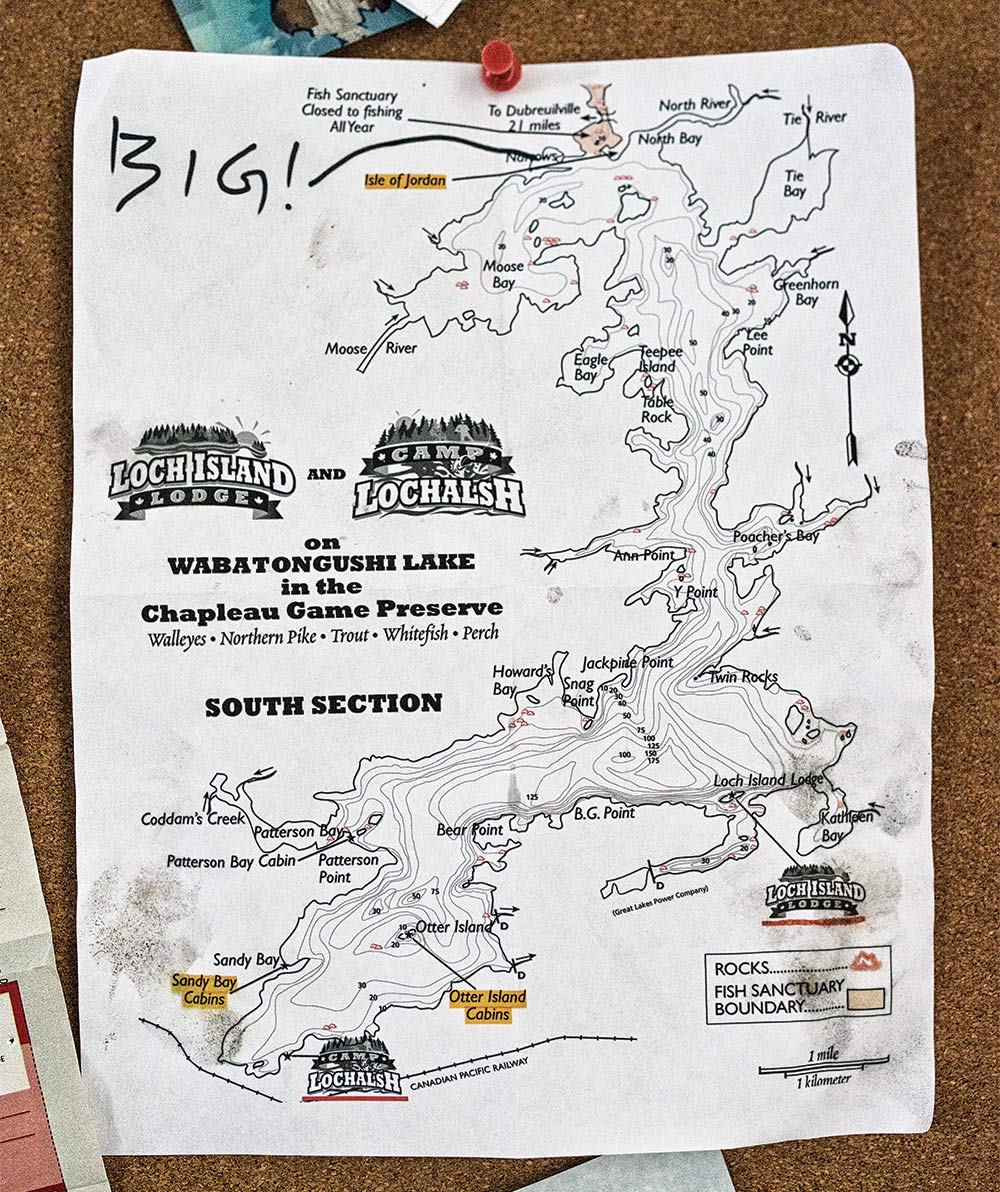
All fishing trips have their own unique reflective interludes. Sometimes it’s a long paddle or portage, other times an endless hike through the thick brambles of a mountain valley, or, in those parts of the world where the heat is severe enough to gum up the hands of your watch, a lemonade siesta in the shade. But on the big lakes of Ontario, your dreamy reveries come in the form of 10-mile boat rides between islands of jack pine and great looming promontories of Precambrian rock. Cruising on the big open water of Wabatongushi on our way to see Big, we glimpse our first sunlight in days, puddles of golden light that glide alongside the boat like manta rays before dissolving again into winter gloom. But it’s a false alarm: By the time we arrive at Big’s bay, it’s as cold as it’s been all week. In the early dusk, a few snowflakes swirl about like midges.
There’s a fundamental difference in approach between casting at random and targeting a known fish. Every action becomes more deliberate, starting with choosing the offering. I open my pike box and pick over the mess of feathers and flash. Selecting the correct size is easy—for a fish named Big, only the biggest will do—but there is color and profile to consider. I decide to heed the wisdom of the late Gary LaFontaine, a brilliant and eccentric fly-tier who argued for matching not the hatch, but the colors of the prevailing light, which in this case means a steely blue and magenta. I finally settle on a Murdich Minnow I had tied years ago to imitate my brother’s Purpledescent Rapala—a lake trout slayer if there ever was one. I give it a few twitches boatside to check out its colors. If an icicle and a baitfish had a love child, this would be it.
Tom and Dan start at one side of the bay, while Brian and I take the other. The idea is to work the shoreline inward and meet in the middle. Twenty minutes pass uneventfully, which is good because it suggests that smaller fish don’t see the area as safe. Then, without warning, it happens.
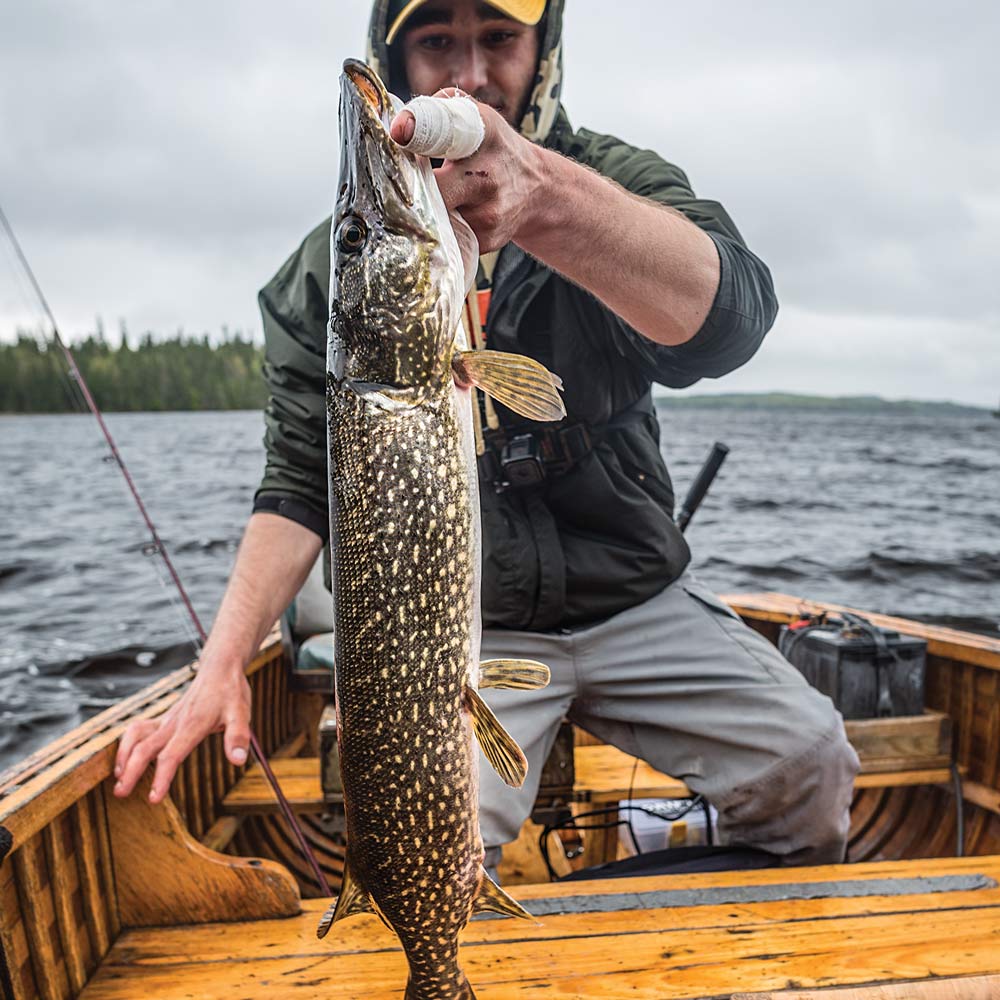
There’s a moment unique to pike and muskie fishing—the sudden heave of water when a fish of mammoth proportions pushes through the shallows. You know something is coming, and you know that this something is big. What’s unclear, at least to a certain vestigial reptilian part of the brain, is whether the beast is coming after your fly or you. In this case, it happens on my second cast to a grassy peninsula where the shallow water quickly drops to deep. “Big!” I yell as I set the hook again and again, holding on and not giving an inch as the fish digs and rolls. It tapes out at 41 inches, my biggest pike ever. Returning to the lodge, I’m met with all the fanfare of a dragon slayer, beginning with beer and culminating in a trip to the bait house, where with a nub of chalk I add my name and the date to the Loch Island Lodge pike fishing hall of fame.
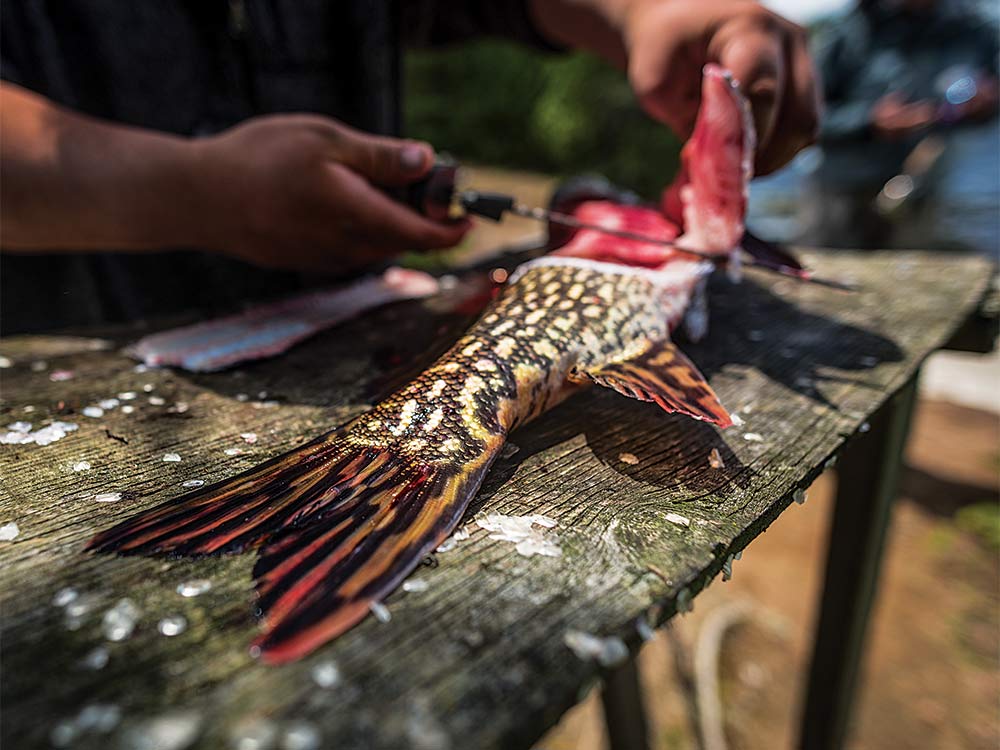
Thus do we pass several blissful days of walleye afternoons, pike evenings, and cold wood-stove nights. We had all largely accepted by this point that our gamble to fish the first warm-weather pattern of the year had failed, and that the trip would end without our partaking of any warm-weather fishing. Then, on our last full day, we wake to something different: enough heat that our first thought of the morning doesn’t involve fire. A quick step outside onto the deck confirms that the cold spell has broken at last. Today will be high sun and blackflies—and, we hope and pray, brook trout. At breakfast, Ryan maps out a small lake deep in the woods that is full of nothing but char, on the hike to which we find the year’s first morels, which we cram into all available pockets. We find the old johnboat hibernating in the grass, then flip it over and push off into the blue, shimmering bay. For the first half-hour, we twitch dry flies on likely looking water, but to no avail.
Then we start to get our eyes. Past the oars, just beyond the visible, the shadows of brook trout dart about in the sunlit depths, crushing minnows. We go to sinking lines and weighted Muddlers, and start catching them in rapid succession. They’re all beautiful fish, and all more or less the same size and shape—plump bordering on corpulent. One of them coughs up a heap of scuds, which explains their fatness and promises a particularly succulent lunch: Few fish are as sweet as those finished on crustaceans. We fish for a few hours, and after catching dozens of fish, we retire to a shady island to build our lunch fire.
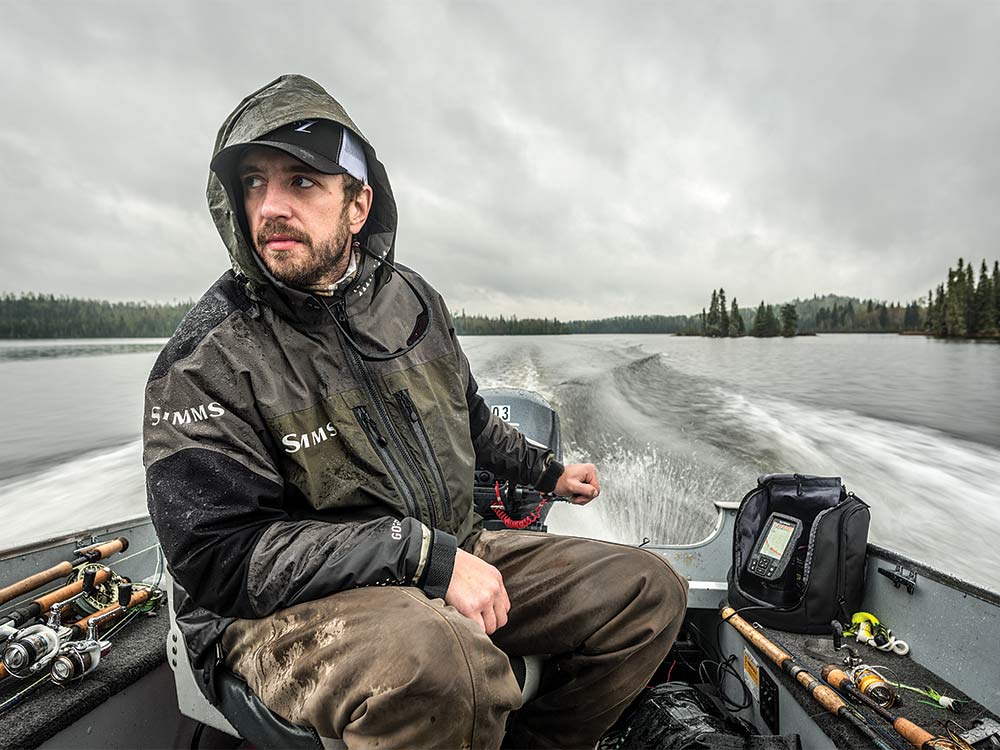
There’s a deep comfort in the sizzle of four whole char baking over a wood fire, especially when those chars’ bellies have been plumped with black morels and spruce tips. The eating is a revelation in the literal sense of the word: All respective sets of bones are picked clean, first with jack-pine chopsticks, then with greedy fingers. Afterward I go down to the water with the carcasses and look out over the lake. The sun is soft and warm, and there’s a feeling that, this time, the warmth is here to stay. The blackflies agree. They aren’t quite eating me alive yet, but they are getting in some mighty good bites.
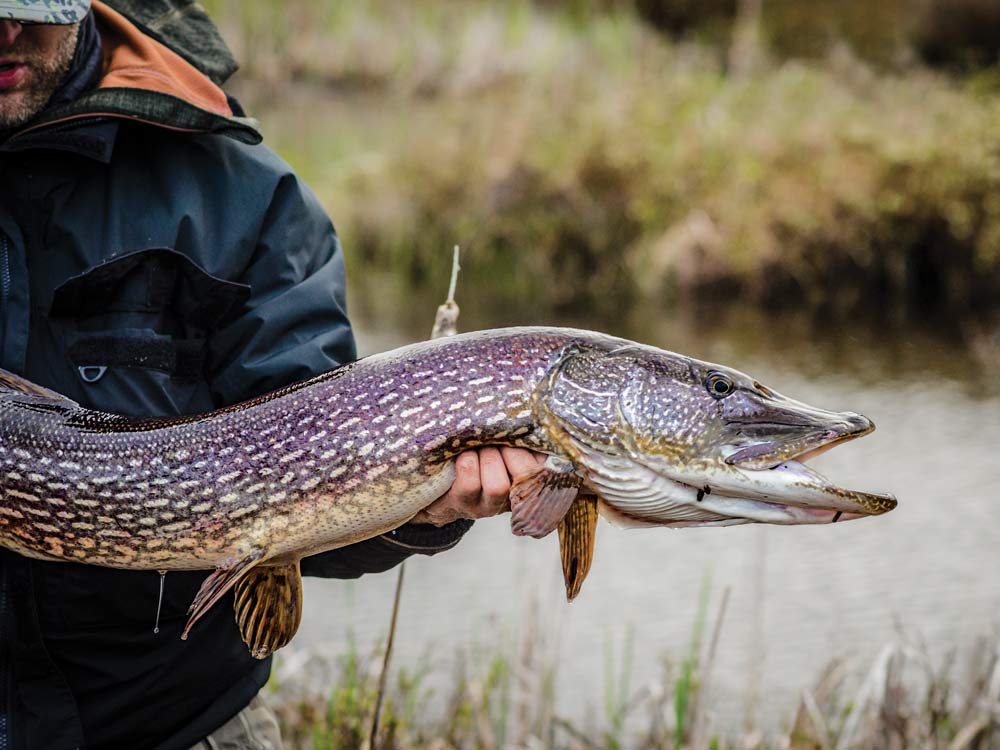
I toss the brook trout spines into the water, and immediately they’re besieged by minnows, a swarm so sudden and thick, you’d think they had some piranha DNA. It strikes me how quickly these bits of brook trout will find their way back into brook trout—quite possibly this evening when the big fish come shallow to hunt. The Canadian Shield in springtime is hungry country, where bits and pieces of one thing quickly find their way into the next. And in the end, this is perhaps the greatest charm and utility of the backcountry, to clarify the connections between the creatures of the world, all losing and gaining themselves at turns. Sometimes the food, and sometimes the fed. Sometimes—I swat at a blackfly and dab at a dribble of blood—both at once.
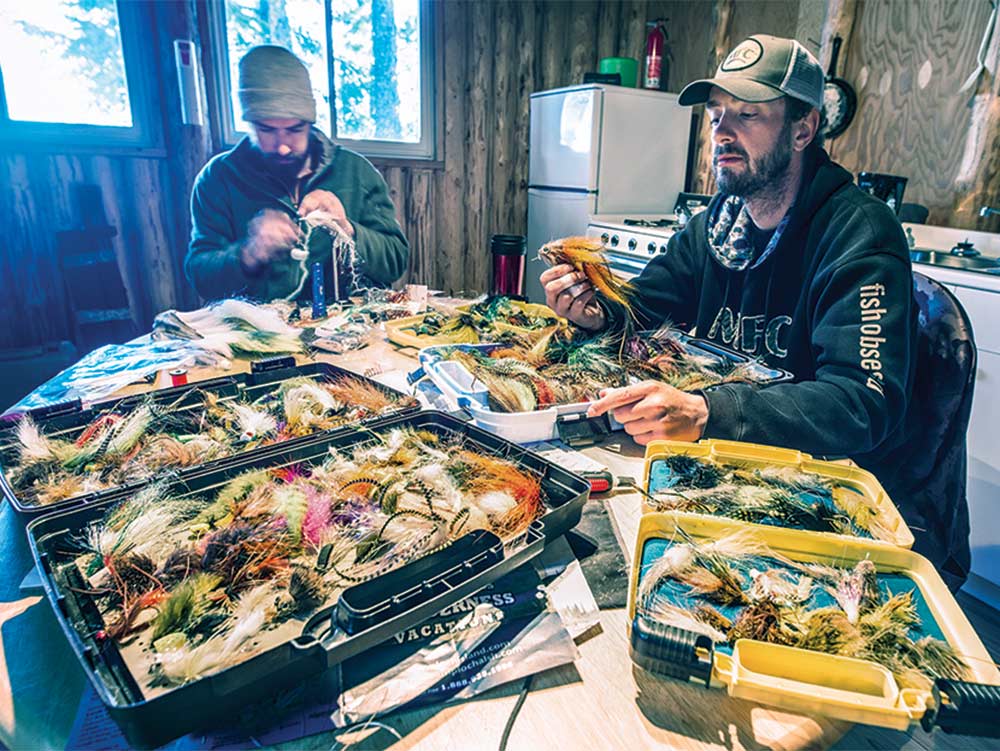
Epilogue
Finally, we come to the end. On our last morning, we get up extra early and load all the gear onto the pontoon that will ferry us to the depot. I’m down one camo Croc and a pint of blood, though I’ve made up for my loss with the kind of extra poundage that comes from eating dessert every night for a week straight. The train is late, but the blackflies are not. Each man attempts a different defense against the bloodthirsty marauders. Dan dons all of his layers, losing triple in sweat what he otherwise would in blood. Tom takes out his camera and attempts to capture visually pleasing constellations of the critters. Brian opts for a more aggressive tactic, loading his e-cigarette to the hilt and doing his best dragon imitation. Finally the train shows up. I lean my head against the window and try to count moose in the swamps blurring by, an arithmetic far more soporific than that involving sheep. Just as on loud, windy nights when you’re camped in the middle of nowhere, phantom sounds start to emerge from the white noise of the tracks: the scream of a fish putting a hurt on the drag, the clunk of the cedar boat hitting dock, the wet thunder of a big pike the first time it breaches. But as I slip into true sleep, there’s a new sound too, not quite a murmur and not quite a hush—the sound of all the unfished water calling out to me, calling after me, as the train hauls east toward home.
Strive For Five
In addition to your fishing gear, these five items will make a difference in your comfort and safety on the big lakes of the Canadian Shield.
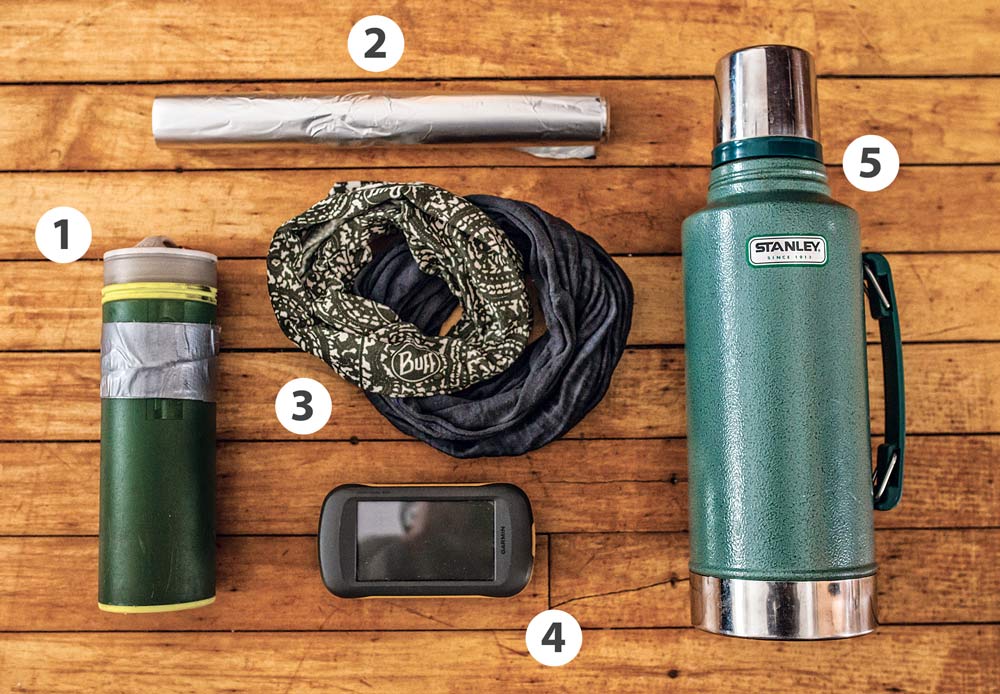
1. Grayl water filter
This French press-style water filter should be standard on absolutely any and every fishing trip. It’s lightweight and carabiner-friendly, and it makes clean, potable water in a jiff. ($60; Grayl)
2. Aluminum foil
Fillets fried in oil are great, and your guide will take care of that for you. But for those days when you want to DIY more-remote water, some foil (along with garlic and olive oil) makes baking a whole walleye or brook trout easy.
3. Buff neck gaiters
Buff’s line of neckwear is great for thermal management and bug control. ($18; Buff)
4. A GPS with an Ontario-specific topo map
A trusty unit will make wayfinding much easier, and comes in especially handy for exploring portage-to-backcountry lakes.
5. Stanley Classic extra-large thermos
Cram your pockets with packets of instant coffee, and your boat will double as a coffee shop. ($40; Stanley)
All Aboard
The fishing season runs from mid-May to early October, with June being the sweet spot for walleyes, pike, and brook trout.
Start planning your trip by getting in touch with the following lodges that operate along the rail line. Per-person package rates given below are for the American Plan (room and three full meals provided) and Housekeeping Plan (room only). Rates are for a three-night stay, though prices vary slightly depending on whether you’re traveling from White River or Sudbury; the varying train arrival and departure times will affect fishing time. Check in with the lodges as your itinerary unfolds.
Lodge Eighty-Eight; $1,159/$999
Mar Mac Lodge; $1,132/$973
Camp Esnagi; $660/$640
Loch Island Lodge; $820/$490
Buy your train tickets on the White River-Sudbury line at VIA Rail Canada. Two-way fares will range from between $40 and $110, depending on your starting point. To get a sense of other opportunities in the region, check out Algoma Country.
